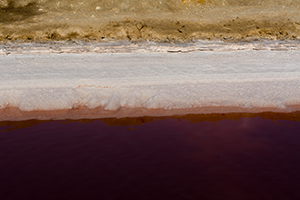Turing Structures for Desalination

Occasionally, it takes decades for the work of a genius to be fully realized, and such is the case with Alan Turing. Although best known for his code-breaking abilities (Enigma in particular), many people don’t realize that his interests extended far beyond mathematics. In 1952, Turing theorized that chemical reactions can create patterns, a concept that has since formed the basis for explaining everything from zebra stripes and leopard spots to sand ripples and crime “hotspots.”
In very simplistic terms, Turing’s paper described how patterns can result from two interacting ingredients if they have specific characteristics in which one is an “activator” and one is an “inhibitor.” The activator self-replicates while the inhibitor prevents it from growing too near. The resulting pattern can be classified as one of two basic types: spots or stripes.
Inspired by this work, chemists in China have exploited these unusual surface patterns to create polymer membranes for desalination of sea water. By adding an activator and an inhibitor during the polymerization process, they were able to achieve an uneven surface structure that removes salt up to five times faster than conventional membranes without sacrificing flow rate. The discovery could greatly improve the efficiency of desalination, which is relied on by more than 300 million people for clean drinking water.
For information: Lin Zhang, Zhejiang University, 318 Liuhe Road, Xihu Qu, Hangshou Shi, Zhejiang Sheng, China 310023; phone: +86-71-8507-0000; Web site: http://en.zust.edu.cn/